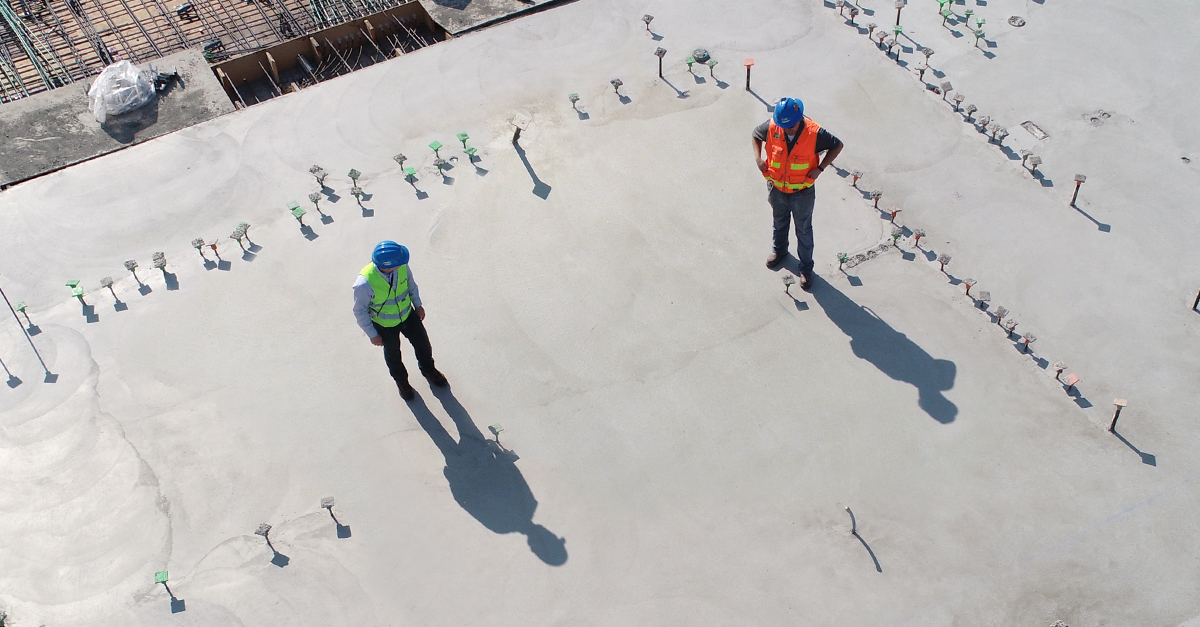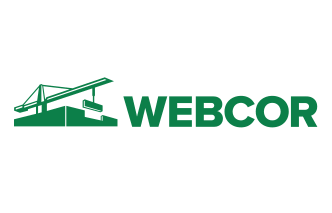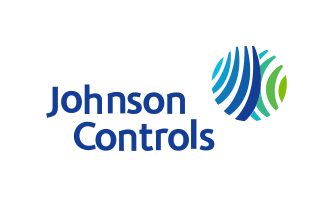How to implement mental health initiatives on construction sites

Construction is one of the world's most physically demanding and sensory-draining industries. Safety gear, fall protection and hazard assessments are routine, but mental health is often overlooked. That oversight comes at a high cost to productivity, safety and lives.
If you’re managing a site, your team’s mental health isn’t just a wellness issue. It’s a safety imperative, a retention factor and a direct contributor to job performance. Implementing wellness initiatives on-site isn’t merely another OSHA directive — it’s how your business and employees thrive.
Summary
Mental health is a critical construction safety issue, with suicide rates nearly double the national average. Unaddressed stress leads to safety incidents, absenteeism, and reduced productivity. By building supportive cultures, training supervisors, using peer advocates, and making resources visible, leaders can reduce risks, improve retention, and create safer, more resilient worksites where mental wellness is treated as essential as PPE.
Takeaways:
- Construction workers experience suicide rates of 56 per 100,000 men and 10.4 per 100,000 women, nearly twice the general population.
- Mental strain increases safety risks, turnover, and lost productivity.
- Initiatives include leadership support, supervisor training, peer advocates, and visible resources.
- Budgeting for and embedding mental health like PPE strengthens long-term workforce well-being.
- Construction leaders should take mental health initiatives into jobsite culture and safety planning to protect workers and improve performance.
Why mental health matters in construction
Construction workers face unique stressors — long hours, physical exhaustion, job insecurity and the stigma of discussing emotional health. The industry ranks second-highest in suicide rates across all U.S. occupations, with mining ranking first. According to the CDC, construction workers face a suicide rate of 56 men and 10.4 women per 100,000 workers, which is almost double the 32.0 general rate.
The stakes are too high to ignore. Addressing mental health on your site is not about being soft — it’s about being smart and proactive. Suicide is only the tip of the wellness challenges that construction workers face, and unaddressed issues can lead to:
- Increased safety incidents: Distracted or fatigued workers are more likely to make dangerous mistakes.
- High turnover and absenteeism: Mental strain contributes to burnout and lost workdays.
- Reduced productivity: Workers struggling with depression or anxiety may have difficulty focusing or meeting project deadlines.
Mental health in construction initiatives and strategies
Various strategies help balance physical safety with emotional wellness, and with these initiatives, you can produce a supportive workplace that encourages open sharing and destigmatizes mental health challenges. After all, it’s your team and your responsibility.
1. Build a culture of support from the top down
You can’t fix what you don’t talk about. Creating an environment where prioritizing mental health is the gold standard requires leadership to show the way. Building a more balanced jobsite can help alleviate mental strain and break down barriers to voicing concerns.
The construction industry is male-dominated, and a more inclusive workforce may create a setting where speaking up about your struggles is supported instead of suppressed. Having a male-dominated workforce — women only account for 10.8% of the construction labor force — can lead to higher mental health and suicide statistics, so construction managers must wisely consider their options to balance their teams for better health. Women may also notice a colleague in distress more easily than their male counterparts would.
Your team should:
- Normalize conversations around stress, anxiety and burnout during toolbox talks. Reduce stigma by refocusing on diverse skills and open discussions. Avoid praising toughness and physical strength, which encourages a grin-and-bear-it attitude among team members.
- Share real data and case studies and tie these directly to site safety and financial performance.
- Model healthy behavior. When senior leaders and supervisors take breaks and seek help for their well-being, it reduces stigma sitewide.
2. Train supervisors to recognize early warning signs
Your supervisors are your first line of defense. Equip them to act early and effectively. You can offer specific training on how mental health issues present in a construction setting, such as irritability, absenteeism and withdrawal. Include role-play and field scenarios during training to help the team practice difficult conversations and know whom they can turn to. Clarify escalation paths — what supervisors should say, do and document when they see a potential concern.
3. Use peer support as a trust bridge
Many workers won’t open up to HR or outside counselors but will talk to a trusted co-worker. A buddy system at work — already great for physical safety — also effectively manages personal challenges and provides a colleague to trust and turn to. Use management to:
- Select and train peer advocates on each crew to serve as approachable contacts.
- Rotate advocates quarterly to reduce burnout and broaden peer coverage.
- Provide scripts, reference cards and a private line of communication with mental health professionals.
4. Make help easy to access and hard to miss
If workers want help, they may not know where to start or feel embarrassed to ask. Information about mental health, like OSHA compliance personal safety posters, is vital to protecting team members, and you should display them proudly across the jobsite.
Post resources, such as hotlines, counseling contacts and crisis text lines, in private spaces like restrooms or break trailers. You can also add a QR code on badges or pay stubs that links to a confidential resource hub.
Keep the messaging brief and direct — skip the corporate lingo and talk like a supervisor when addressing a wellness concern. Ensure your team knows that you and their managers prize wellness and understand their challenges.

5. Schedule with mental load in mind
You already plan around weather and material delays — so plan around human capacity, too. Rotate labor-intensive or mentally draining tasks, especially in high-heat or high-risk environments. While one team member may be more skilled at a particular task, only assigning it to them can lead to burnout.
Enforce real breaks and cooldowns. Skip the “just push through” mentality — fatigue equals risk. Encourage management to avoid glorifying overwork. Reward efficiency, not long hours for the sake of optics.
6. Embed mental health into existing safety protocols
Mental wellness and physical safety are two sides of the same coin. Treat them as equals. You should add a wellness check-in question to pre-task safety briefings.
Use training opportunities to encourage crew members to “call it out” if they or a co-worker seems mentally unwell or engages in excessive drinking or substance abuse during leisure hours, which may affect their concentration at work.
Review incident reports with an eye for psychosocial and emotional factors, such as stress, conflict or fatigue, and take steps to minimize them.
7. Budget for mental health the same way you do for PPE
Mental health resources require funding, which means treating them like other essential safety equipment. Include training costs, printed resources and partner services in your annual safety budget. You should reframe return on investment calculations to include reduced incidents, better retention and improved jobsite morale as cost-saving steps instead of seeing them as expenses.
Consider partnerships with local nonprofits or unions to reduce costs and increase access to support services. Businesses that work with communities thrive and foster a supportive workforce.
8. Loop in your subcontractors
Mental health is a shared responsibility — your culture must extend beyond full-time employees. Including well-being expectations and resources in subcontractor onboarding encourages workers to approach their team leads when they face challenges without fear or discrimination.
Offer the same training and resources to subcontracted teams to expand on the concept of work teams being family. Encourage open communication between crews, even if they report to different firms.
9. Track impact and adjust as needed
Mental health isn’t a one-off program — it’s a system that evolves. Assign it the same value as you would an important team member. You should:
- Track absenteeism, incidents, turnover and employee assistance program usage pre- and post-initiative.
- Collect anonymous worker feedback at regular intervals.
- Adjust your approach after key milestones, such as project completions, layoffs or weather delays that often trigger spikes in mental health needs.
10. Invest in long-term culture, not just compliance
Checking a box is easy, and while changing culture takes effort, it pays off. Working with unions and team members is vital to creating a workplace that supports all challenges. Revisit your policies to include comprehensive wellness in performance expectations and reviews. Partner with mental health organizations familiar with construction and your team's daily pressures.
Above all, celebrate progress. Acknowledge teams that model supportive behavior or encourage others to seek help.
Support mind matters
Supporting mental health on construction sites isn't just about ticking a compliance box. It’s about investing in people, just like you invest in training, materials and machinery. When your team enjoys sustained wellness, your site is safer, your projects run smoother and your reputation grows stronger.
You’ve got a blueprint for buildings. Now you’ve got one for mental health culture, too.





















